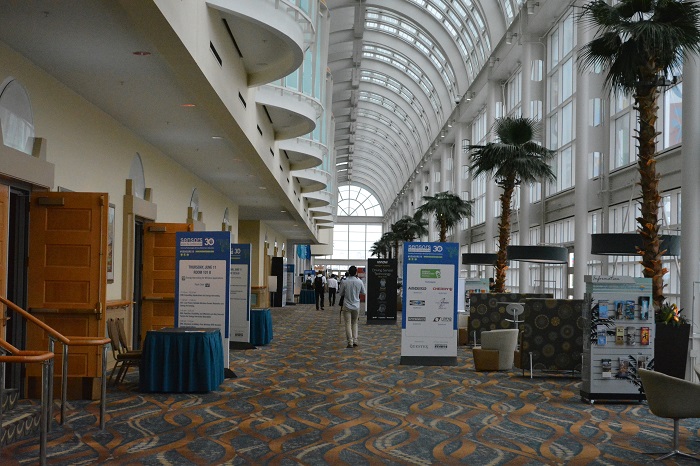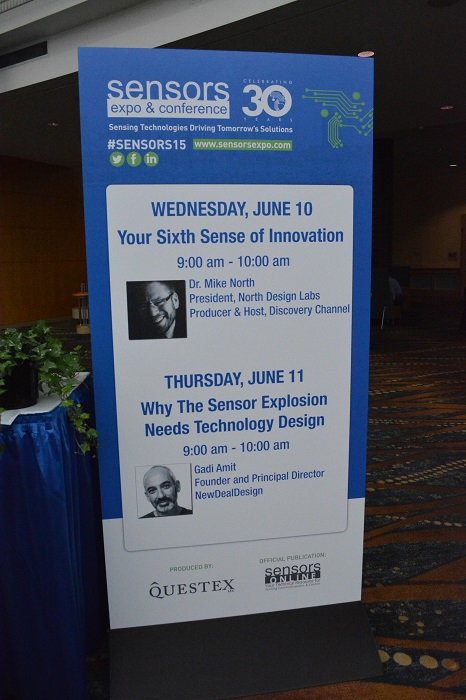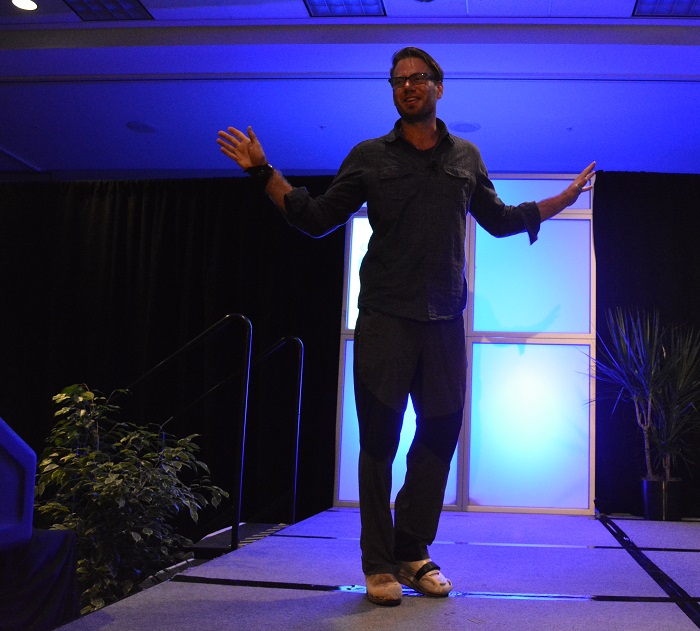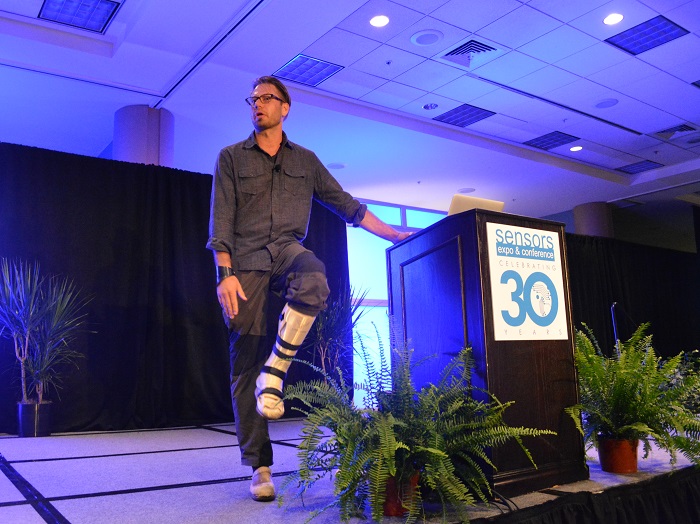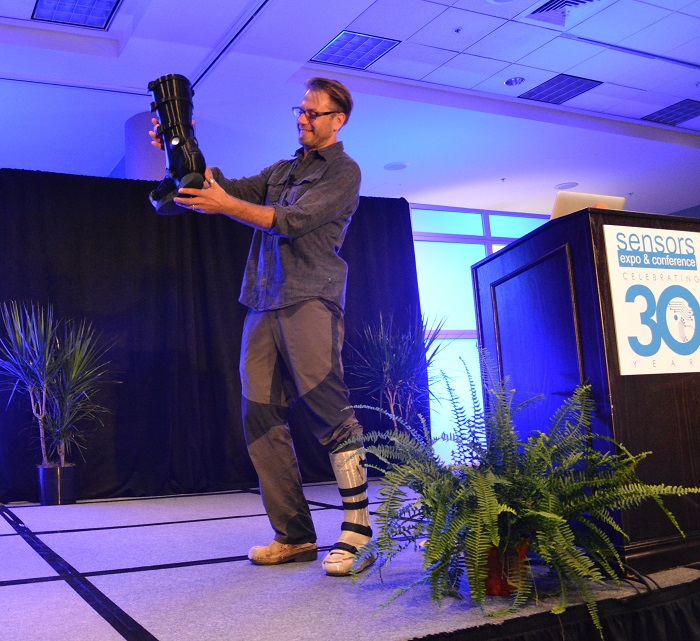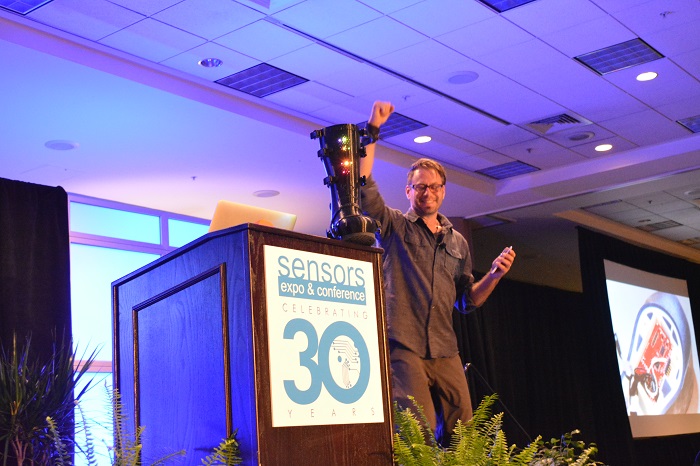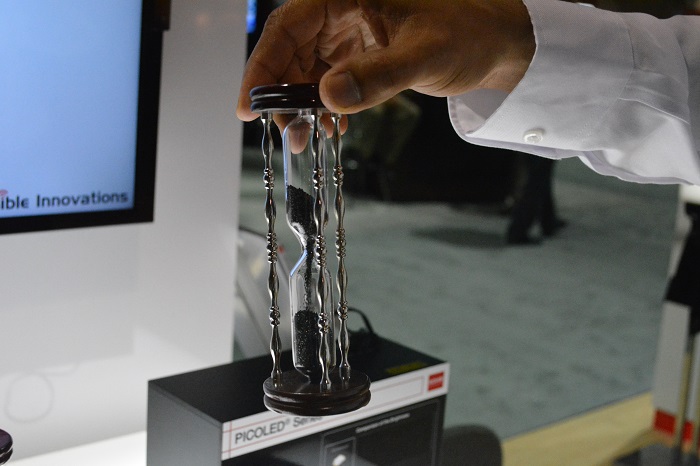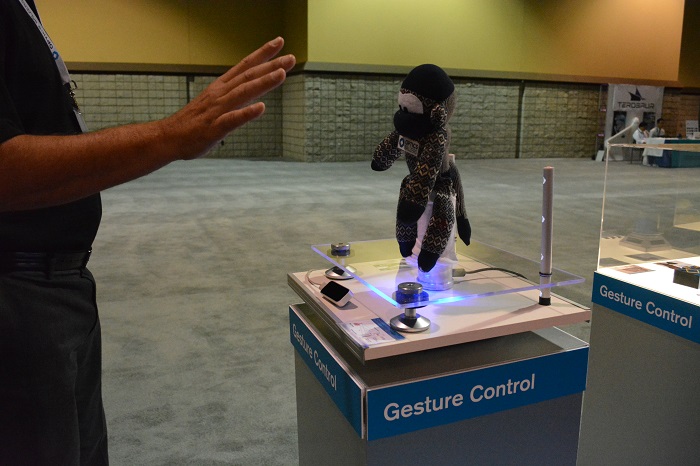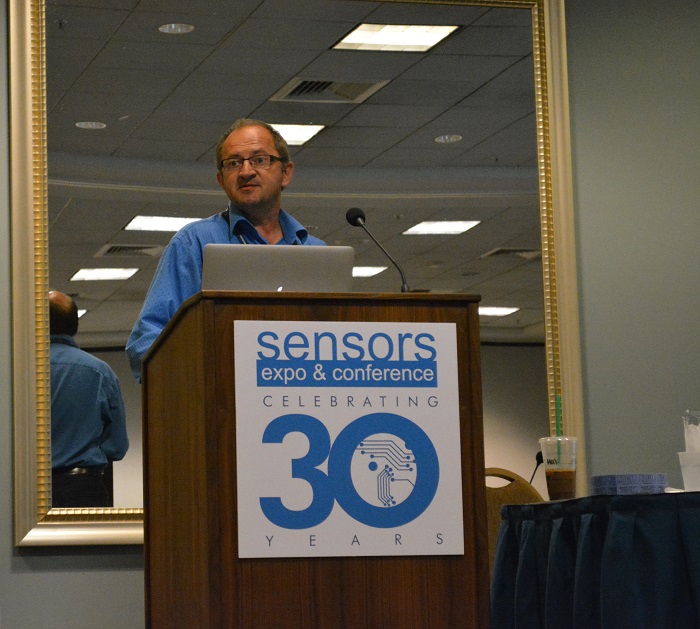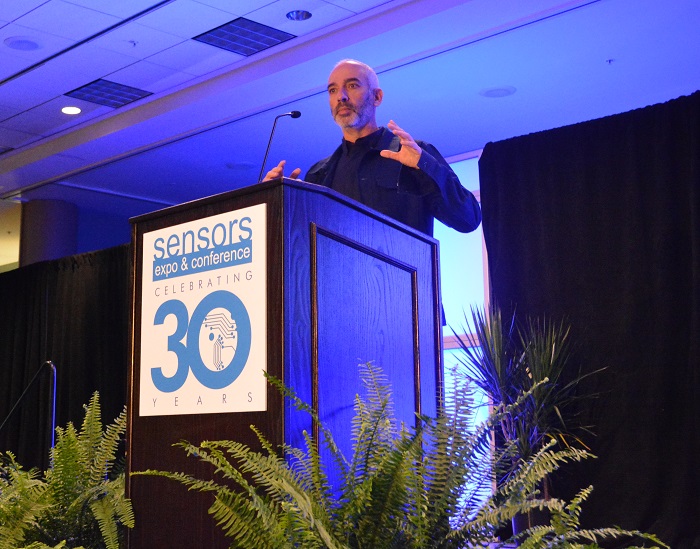by Dot Cannon
What can you do with sensors and imagination?
On Wednesday and Thursday, the Sensors Expo and Conference in Long Beach continued to provide answers to that question, as they celebrated their 30-year anniversary.
“(Innovation involves) using your intuition, imagination and something that engineers absolutely hate: risk,” Dr. Mike North, President of North Design Labs, said during his opening keynote.
“(Innovation involves) using your intuition, imagination and something that engineers absolutely hate: risk,” Dr. Mike North, President of North Design Labs, said during his opening keynote.
Dr. North said that element of risk had paid off, during his graduate work in the lab with geckos. “I get these little mistakes, and one of those ended up being the core of my Ph.D.,” he said.
(Dr. North’s graduate work involved inventing the world’s first adhesive that can be turned on and off electronically, according to his biography on North Design Labs’ website.)
Traveling across the stage and back, Dr. North told the audience about the risks he’d taken in his work as host of the Discovery Channel’s “Prototype This”. One of them included building giant boxing robots.
“I almost got clocked in the head by one of these things,” he said.
Towards the end of his presentation, Dr. North revealed a fact that hadn’t been obvious: he had a broken leg. But he hadn’t wanted to use a standard cast and crutches. So…
…he’d had one 3D printed, with straps that loosen to allow him to travel easily on a plane. However, the innovation didn’t end there.
“This is the Boomcast,” Dr. North said. “The whole thing was from design to my hand in a week and a half…It took about twelve different people to make it in the amount of time.”
Fathom Labs created the Boomcast from a digital body scan, according to one of the slides in the presentation. The buckles are 3D printed, there’s a foam interior and…
…it has multicolored LED lights and Bluetooth-enabled speakers. For this occasion, it played an uptempo dance number!
After this first keynote, the exhibit floor was open. An exciting part of getting to cover this particular conference, was seeing the elements of innovation, before they start showing up in our consumer electronics.
An exciting part of getting to cover this particular conference, was seeing the elements of innovation, before they start showing up in our consumer electronics. 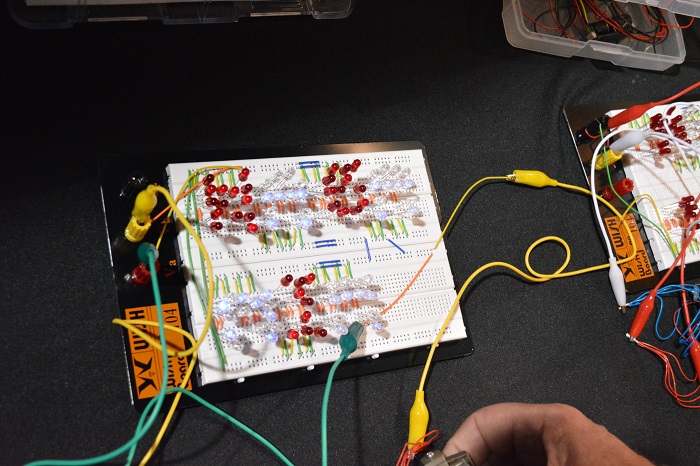
At the NASA booth, visitors could squeeze a small device to generate just enough power to light up the word “NASA” on this board.
Grains of sand? Looks are deceiving…
These are Rohm proximity sensors with a built-in ambient light sensor, for wearables and portable technology. 
This chip is actually .45 millimeters thick–thinner than the business card!
It can be used in gesture-control technology, similar to this demo. “Imagine going to a pay terminal and being able to pay (by credit card) with a gesture, instead of swiping!” said Brian Fuller of Kionix. Conference sessions, during both days of the Sensors Expo, covered a range of sensor-related tracks.
Conference sessions, during both days of the Sensors Expo, covered a range of sensor-related tracks.
As part of the Internet of Things track, Mark Noworolski, of Streetline Inc., gave a presentation on “Furthering IoT and the Smart City Vision with Smart Parking Sensing”.
Mark, who is Chief Technology Officer and Co-Head of Streetline’s IoT Systems Group,talked about his company’s consumer mobile parking applications. One free app, Parker, provides users with information on available spaces.
“Parker will tell you areas where you have a high probability of finding a space,” he said. But, there’s also an application for cities that’s far less popular with drivers.
“We’re providing the visibility of where the (parking) violations are to the municipalities,” Mark explained, showing a diagram of his company’s Guided Enforcement™ app. “Each of those bubbles indicates where the violations are in each block.”
NewDealDesign President Gadi Amit, gave the keynote speech on Day Two. His presentation, entitled “Why the Sensor Explosion Needs Technology Design”, highlighted the need to keep people in mind, when designing new technology.
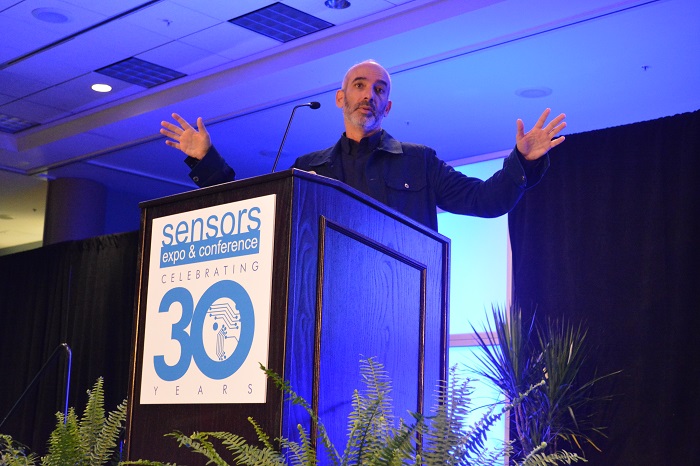 “Typically, in technology and business, human needs fall into these “nice to have” categories,” he said. “In order to make wearables effective you really need to think about humanistic values.”
“Typically, in technology and business, human needs fall into these “nice to have” categories,” he said. “In order to make wearables effective you really need to think about humanistic values.”
“Essentially, we’ll be dealing with four different spaces,” Gadi continued. “There’s the home, it’s very unique (due to emotional considerations). Yourself, your body, family. Work, (which is) a very dynamic environment. (And) structures, megastructures like the city.”
Among NewDealDesign’s projects Gadi discussed were baby-monitoring wearables for startup Sproutling, and a skin scanner, called Oku, that scans developing spots and recommends skin treatment.
But the real jaw-dropping innovation came towards the end of his presentation.
Currently, Gadi said, NewDealDesign is exploring a technology they call Project Underskin. This “involves a UI device that will be imprinted under your palm, that will allow you to control digital devices you may have.”
While implying that this new project was only a “maybe” for the future, Gadi said it was the precursor to a trend.
“We are all going to move to something new in digital thinking. I call it ‘digital persona’. We are all going to live with digital stuff attached to us. To me, it’s a fascinating brave new world, that’s coming to us quickly, that we haven’t thought a lot about.”

